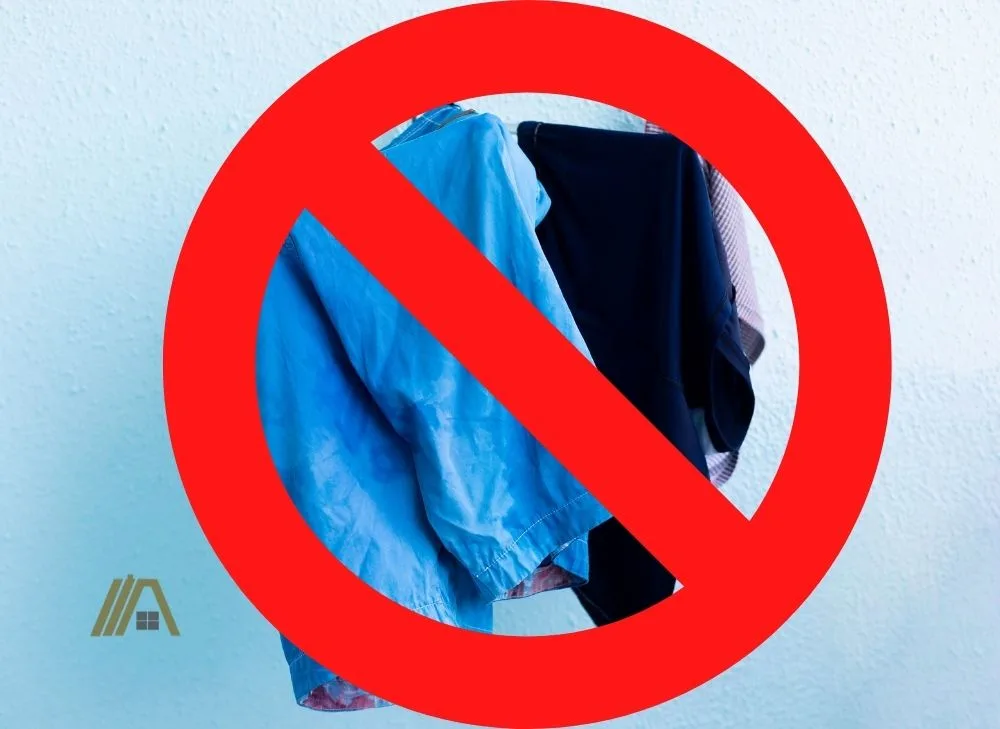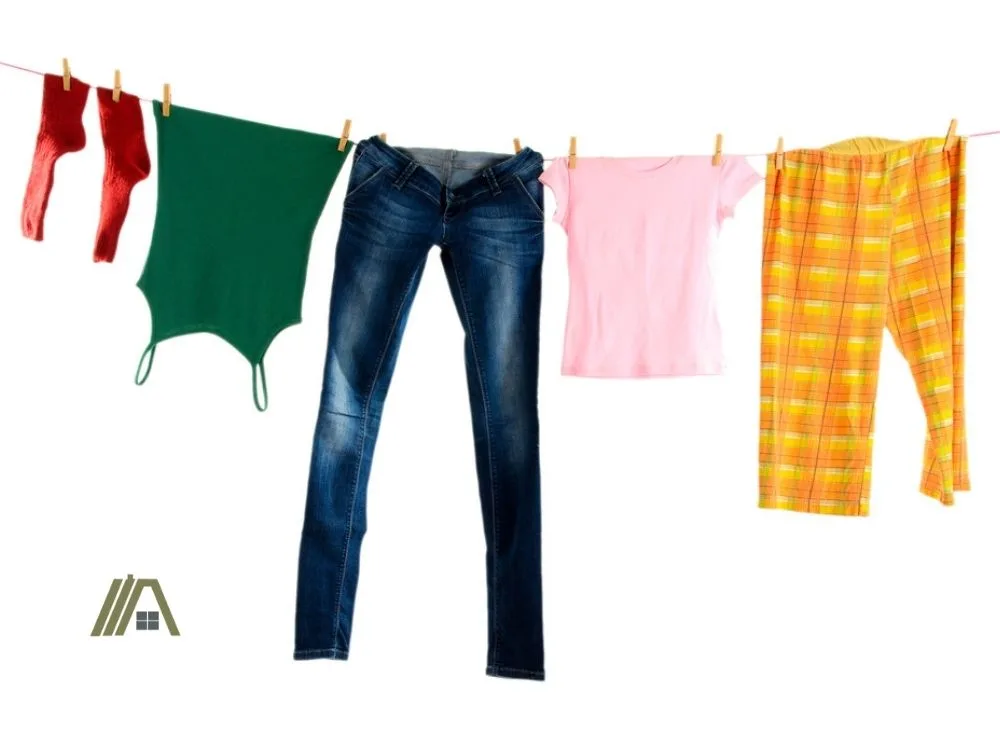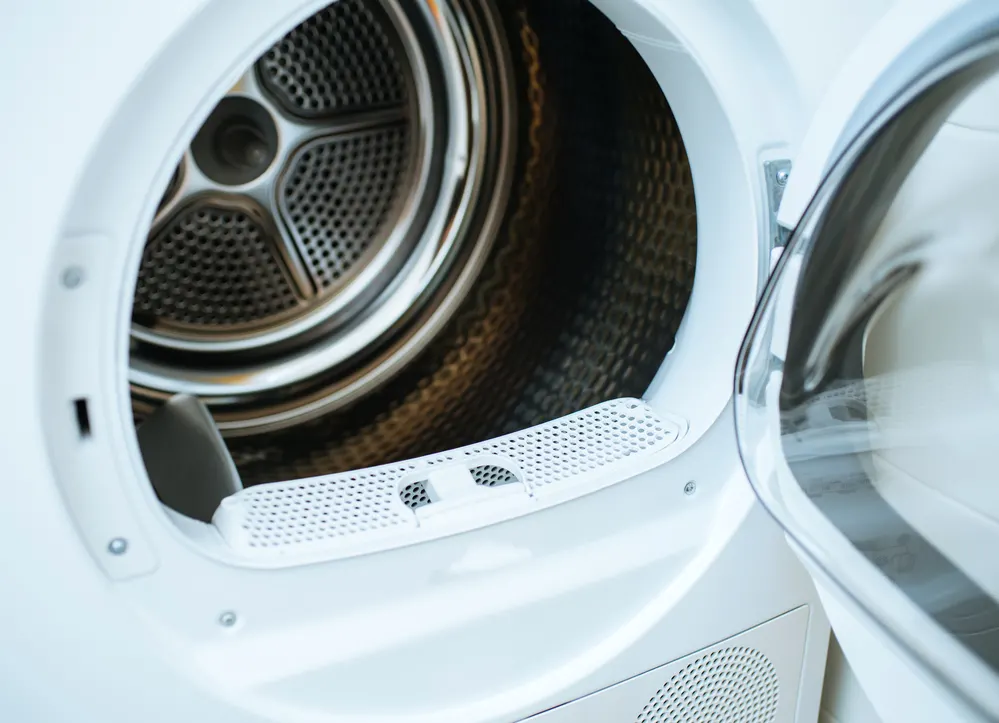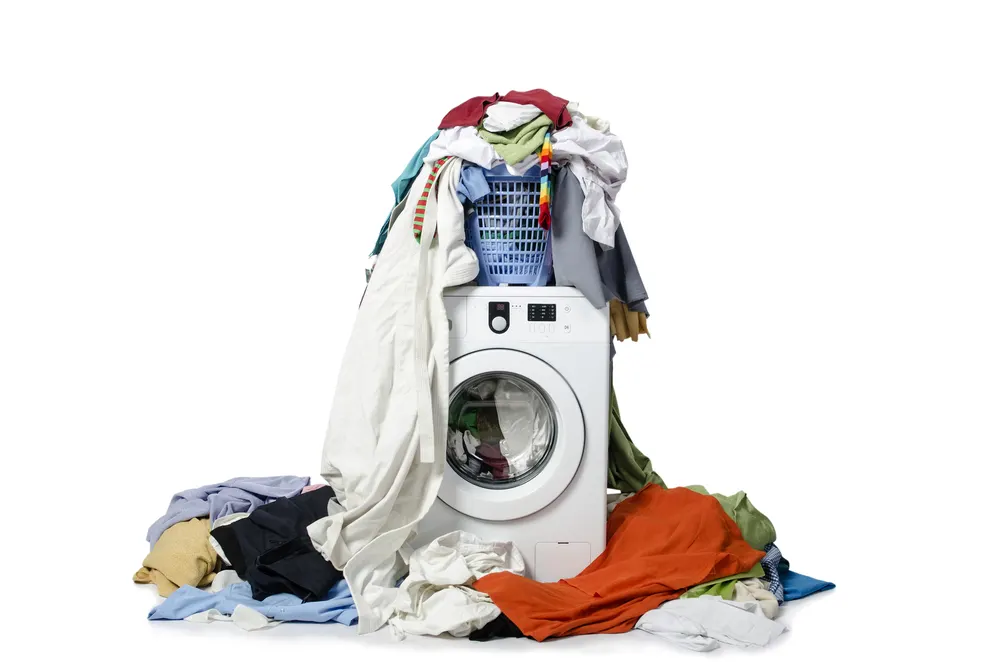It can be tempting to toss our wet clothes straight into the dryer no matter the situation—straight out of the washer, right after hand washing the clothes, or after getting home during a surprise rainstorm and peeling off your soaked clothing. Many of us don’t see any problems with that.
Unfortunately, it is actually possible for your clothing to be too wet for the dryer to handle. Certain situations will require you to dry your laundry a bit first. We’re going to discuss why that is and look for some simple solutions for this problem.

Clothes can be damp but should not be soaking wet when put into a dryer. They could damage the dryer if they were still dripping. Clothes can go into the dryer right after a properly working spin cycle, after being well-wrung out of any excess water, and/or air-dried for 30 to 60 minutes.
Dripping Wet Clothes Should Not Go in the Dryer
As the name would suggest, clothes dryers are meant to dry your clothes. However, as I’ve already mentioned, there is such a thing as too wet when it comes to what clothes you can put inside the dryer.
While the clothes that you pull out of your washer will, of course, be damp, they should not be soaked enough to drip or dribble off excess water.

Clothes that are too wet and waterlogged are much heavier than clothes that are just damp.
By putting a soaking load into the dryer, you are putting the drum, the motor, and the bearings under unnecessary stress that could wear your machine down.
Additionally, soaking wet clothes may take a much longer time to dry than damp clothes. Rather than running your dryer for one full cycle, it can take several cycles to get the clothes anywhere near dry.
Lastly, it is also possible for soaking clothes to cause an issue with your dryer’s electrical parts. While dryers are, of course, meant to handle some wetness, dripping clothes increases the risk of water getting somewhere it shouldn’t.
Spun-Dry Clothes Can Go in Dryer
Laundry machines come with the ability to run a spin cycle, which usually runs automatically at the end of a wash. However, it can often be run on its own as well, which means even hand-washed clothing can get a good shake without having to use more water.
The spin cycle is meant to rotate your clothes around at high speeds, using centrifugal force to shake off much of the excess water.
After the spin cycle is done, your clothes should be left damp, not soaking. This is, again, the ideal level of wetness for clothing that goes into a dryer.
If your clothes are still very wet after going through the spin cycle, there may be something wrong with your washing machine. To save yourself the headache of having to get the excess moisture out another way, you’ll probably want to have this fixed.
Best to Air Dry for a Bit Before Tumble Drying
Some old washing machines may not have a spin cycle, or as mentioned above, yours may not be working at the moment.
Alternatively, if you hand wash your clothing but have a dryer, you still need a way to get your clothes dry enough that they don’t drip. This is where air-drying comes in.

First, you’ll want to gently squeeze and wring out as much water as you can. If you’re in a rush, this might be sufficient on its own. But whenever possible, you should allow your clothes to air dry just to be safe.
For air drying, you’ll want to hang up your clothes for about 30 minutes to an hour. Use what you have—a laundry rack (amazon link), a clothing line (amazon link), or even a bunch of hangers (amazon link).
Hang your clothes as flat as possible and ensure they do not touch each other, so they are able to “breathe” on all sides and dry more effectively.
After your clothes have spent a short time air drying, they should be dry enough for your dryer to finish the job.
Heat Dry Clothes up to Avoid Ironing
While your clothing can be too wet for the dryer, thankfully, there’s no such thing as being too dry! That “thankfully” is because placing your dry clothing inside a dryer can save you time on ironing.
If you are in a rush and want to look put together, or if you have clothing you would like to look a bit neater, you can toss your clothes in the dryer for 5-10 minutes until they are nice and warm.
Remove your clothing before your dryer begins the cooling cycle. After removing your clothes, you’ll want to quickly smooth them out on a flat surface and allow them to cool for a moment.
Your warm clothes will set in the shape they cool down in, which is why this trick will neaten out your clothes. It is also the reason why forgetting your clothing in the dryer can leave them looking wrinkly and crumpled.
Soaking Wet Clothes Will Shorten the Dryer’s Life
It might be tempting to just shove the sopping wet load of laundry straight into the dryer after the wash cycle is done, but unless you want to pay for it in the long run, don’t do it. First, you need to make sure that the washing is not too wet for the dryer.

Putting soaking wet clothes into your dryer will reduce its overall lifespan. Instead of owning one for a decade, you might find yourself replacing it after only 5 or so years if you continuously perform this error.
Dryer Runs Longer
When you put a load of sopping wet clothes straight into the dryer from the washing machine, the amount of water that needs to be removed from the clothes is a lot more than what the machine is actually capable of doing in a normal drying cycle.
More water means more time to remove it, so your average drying cycle will take quite a bit longer than it normally would.
Not only does this mean that you will have to wait longer periods between loads (this is even more inconvenient with a washer dryer combo machine), but it will also mean you are using electricity for a lot longer as the motor will need to run for an extended period of time, which can become costly quickly.
Loads Are Heavier
It is no secret that a basket of soaking wet clothes feels much heavier than a basket containing the same amount of clothes, only slightly damp.

Just take your average cotton t-shirt; if it normally weighs 5 oz. (150 grams), then once water has been added, it is known to increase by double its weight. This means that your t-shirt will now weigh close to 10 oz. (0.5 kg). Quite a difference.
Wet clothes will make the dryer load a lot heavier. This increased weight will put a strain on the drum of the dryer as well as other moving parts in order for it to perform its function.
This increases the chance of a premature breakdown and the risk of you having to replace certain components of the machine, like the dryer belt (crucial to the function of the dryer), or the entire appliance altogether.
Split Loads Means Dryer Runs More Often
If you try to reduce the weight of the wet clothes in your drum by reducing the load size, the effects on time and cost are significant.
Since you will be drying fewer clothes at a time to allow for all of the water to be removed properly, the dryer will have to run more often to accommodate the additional loads.
This increases your energy bill, decreases the efficiency of your dryer, as well as increases the time spent between loads, which can be very frustrating for those days when you feel like you are never going to see the end of the laundry basket.
Very Energy Inefficient
Dryers are appliances that use a decent amount of electricity in order to run. A report from nearly a decade ago stated that Americans are using up to 4 billion dollars worth of energy running their dryers. One can only imagine how this amount has increased over the 8 years since its publication.
Putting the wet clothes straight into the dryer as soon as they come out of the washer isn’t normally a problem because all washing machines have a spin cycle. It becomes an issue when the clothes are soaking wet—this will really end up costing you.
Soaking wet clothes will require the dryer machine to work overtime in order to remove all of the water from the load. The machine will either run for much longer than normal or, if you decide to split up the load into a few separate mini loads, will run more often.
The extended period of time in which your dryer will be operating will really rack up your electricity bill, which can start to cost you a small fortune each month and will probably weigh heavily on your conscience as your footprint increases.
Sources
https://askinglot.com/can-you-put-sopping-wet-clothes-in-the-dryer
https://everythingwhat.com/can-i-put-soaked-clothes-in-the-dryer
https://faq-all.com/en/Q%26A/page=daaeef7914a7455d4fffb91a0a942751#s0
https://info.kensplumbing.net/blog/what-do-each-of-the-washing-machine-cycles-mean
